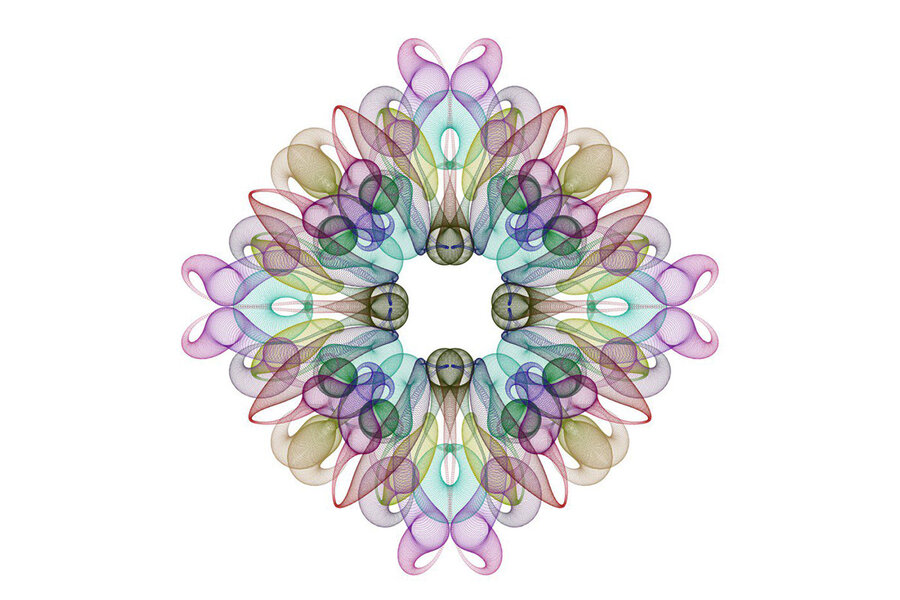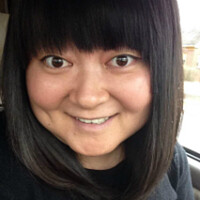Can an algorithm be art?
Hamid Naderi Yeganeh is not a typical artist. Instead of using pencils, brushes, or even a digital stylus, his medium of choice is math.
Using mathematical formulas, the Iranian mathematician and digital artist programs computers to draw looping geometric designs, as well as birds, flowers, and other features of the natural world. This kind of collaboration between artist and machine rekindles perennial questions about what constitutes art and who deserves attribution.
“An artwork is never wholly independent; someone else made the canvas, someone else made the brushes, someone else made the paint,” says Richard Rinehart, director of the Samek Art Museum at Bucknell University in Lewisburg, Pa. “And those things are not incidental. They are incredibly important to the art world.”
And digital artwork, created using computational technologies, involves even more people than painting, says Mr. Rinehart.
Digital art is nearly as old as computers. From fractal art and graphic design software to photo-editing and digital animation tools, artists have for decades employed computational tools to produce and enhance art.
Digital artists have long faced criticism from art-world purists, who challenge the idea that art created with computers qualifies as “real art.”
That idea has withered over time, as digital art has found gallery space in modern art museums. Even some traditional fine art museums such as London’s Victoria and Albert Museum now have computer art collections.
When Mr. Yeganeh started making digital art in 2014, he set out to see what kind of art a computer would produce using his trigonometric functions. For these images, the computer plays an essential role and deserves 50 percent of the credit, he says.
“After a while, I understood I could draw real-life things by using mathematical equations,” says Yeganeh.
This process requires more intentional planning on the part of the artist, he explains. He begins with a clear vision for the end product and uses a step-by-step process to find the appropriate mathematical function to make that vision a reality.
When producing these pieces, “the computer plays the role of a brush. So the artist takes 100 percent of the credit,” he says.
But to Rinehart, the question “Whose art is it?” is more philosophical than technical.
One theory, put forth by French literary critic and theorist Roland Barthes in the 1967 essay “The Death of the Author,” suggests that the viewer plays an integral role in realizing a work of art. Barthes urged the art world to expand the idea of “author” to include both artist and viewer.
That idea spawned a slew of philosophical questions, Rinehart says: “Who is the author? Is there one solitary genius [behind] any work of art? Or is every work of art really the social production of the environment in which it came, including dozens if not hundreds of other people?”
The introduction of artificial intelligence into digital art brings more than just a machine into the process, Rinehart says. AI is part of a social fabric. Behind every program, there are people. Any AI is going to be heavily influenced by the people who wrote the program. The creators of the underlying code are influencing the artwork, and their aesthetic choices are built into the code.
Yeganeh agrees that the role of the programmer can never be fully disentangled from the product. “Computers make it possible for us to explore beautiful patterns quickly,” Yeganeh says. “My computer can’t determine the most beautiful shapes. It is my job to find the most beautiful shapes. So I don’t think computer-made art clashes with human creativity, but it can change the role of artists.”






